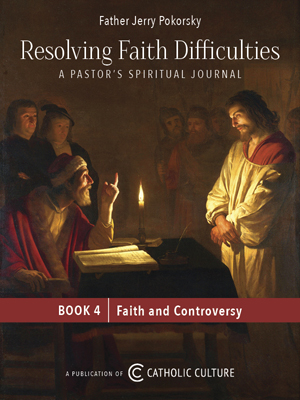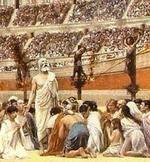Good News for the Liturgy
By Dr. Jeff Mirus ( bio - articles - email ) | Oct 07, 2008
For liturgical changes over the past generation or so, official preparation of the faithful has been minimal. The vacuum has too often been filled by professional liturgists and liturgical publishing houses with their own agendas, agendas sometimes at odds with the unbroken Tradition of the Catholic Church. But not any more.
The Mass is currently being re-translated in a long project arising from two important Vatican initiatives. In 2001, the Congregation for Divine Worship issued new principles of proper translation in Liturgiam Authenticam, a document which in effect invalidated the excessively free renderings of recent years. In 2002, the third edition of the Roman Missal was published, which itself included various clarifications and instructions based on the Church’s experience since the second edition in 1975.
The new principles of translation require far greater fidelity to the official Latin text. This alone will result in the restoration of many traditional phrases which were summarily eliminated by earlier English translations, to the impoverishment of the Church’s piety and sense of the sacred. In response to the Vatican guidelines, the bishops in the United States divided the Missal into twelve segments and began work on a new translation. In 2006, they completed the first segment, including most of the ordinary portions which are used at every Mass. In 2008, the bishops voted to reject the second segment (the propers) in favor of sending it back to the translators for more work. Meanwhile, the first segment was approved by the Congregation for Divine Worship and the Discipline of the Sacraments on June 23, 2008.
Francis Cardinal Arinze, President of the Congregation, instructed that the changes are to be implemented only following a period of time “for the pastoral preparation of priests, deacons and for appropriate catechesis of the lay faithful.” According to Cardinal Arinze, this delay should also serve to “facilitate the devising of musical settings for the parts of the Mass, bearing in mind the criteria set forth in the Instruction Liturgiam Authenticam, n. 60, which requires that the musical settings of liturgical texts use only the actual approved texts and never be paraphrased.” That last point will bring relief to Catholics who have been subjected to inaccurate and even bizarre texts for musical use.
Of course the whole process of translation will take years to complete, but one very hopeful development is that the process of preparation for the changes is now being handled directly by the Bishops Committee on the Liturgy itself. Any Catholic can both follow the progress of the translation and make use of preparatory materials by visiting the BCL’s web site. Thus the entire process will be directed by the bishops and accessible not just to specialists, but to all the faithful. Our formative understanding of the liturgy will no longer come from liturgical publications or workshops advocating their own dubious ideas.
The problem with modern liturgical tampering is captured nicely by the old joke which asks the difference between a liturgist and a terrorist. The answer is: “You can negotiate with a terrorist.” Now, however, the process of implementing changes to the liturgy has been removed from what has often been called “the liturgical industrial complex.” Instead we’ll be looking toward the bishops themselves—bishops who are showing themselves to be something of a new breed simply by insisting on their personal responsibility. For the Sacred Liturgy, and for all Catholics in the United States, this is good news.
All comments are moderated. To lighten our editing burden, only current donors are allowed to Sound Off. If you are a current donor, log in to see the comment form; otherwise please support our work, and Sound Off!








